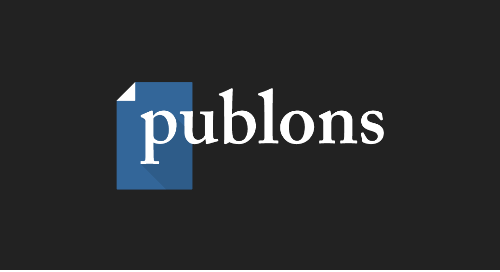referrals-and-transfers-an-editor-q-a
June 03, 2021
Papers get rejected for a variety of reasons. If a paper is scientifically sound, but not right for the journal the author submitted to, then an editor can help that paper get published by offering the author the option to transfer their paper to a more suitable journal through a streamlined resubmission process.
In this blog series, we will hear from Wiley journal editors that participate in manuscript referral at the decision stage. We asked these editors for their thoughts on referring manuscripts. What motivates them to refer? What questions did they have when they began referring papers? Saving authors and reviewers time, helping good papers get published even if they do not fit the intended journals’ scope, and supporting other journals are just some of the reasons why editors make referrals. Read on for their advice to fellow editors.
 Professor Chongqing Kang [CK], International Transactions on Electrical Energy Systems Editor-in-Chief
Professor Chongqing Kang [CK], International Transactions on Electrical Energy Systems Editor-in-Chief
 Dr. Haymo Ross [HR], Chemistry – A European Journal Editor
Dr. Haymo Ross [HR], Chemistry – A European Journal Editor
 Professor Ruth Striegel Weissman [RSW], International Journal of Eating Disorders Editor-in-Chief
Professor Ruth Striegel Weissman [RSW], International Journal of Eating Disorders Editor-in-Chief
![Professor Giampaolo Viglia [GV]](/content/dam/wiley-network/en/b2c/content-fragments/publishing/research-publishing/editors/referrals-and-transfers-an-editor-q-a/image-8.jpeg) Professor Giampaolo Viglia [GV], Psychology & Marketing Editor-In-Chief
Professor Giampaolo Viglia [GV], Psychology & Marketing Editor-In-Chief
1. How did you start referring papers?
[CK] In 2018, my Journal Publishing Manager wrote to me regarding the launch of a new journal, Engineering Reports, which Editors-in-Chief of journals within the subject area were asked to refer rejected papers to. I thought it would be a good way to support the new journal and agreed to follow the process after discussing my initial questions. To start the process, Wiley updated the submission site and proposed a new decision letter model. I then started referring papers at the very beginning of 2019.
[HR] I guess as long as I have handled submitted manuscripts, starting more than 20 years ago at Angewandte Chemie, I have made transfer offers to other journals based on reviewer recommendations. At that time there was a handful of other journals we could refer to and Angewandte Chemie was the only supporting journal. By now we have a strong transfer network, including more than 20 chemistry titles, so there is almost always a chance to offer at least one alternative journal if a manuscript is to be rejected. Our electronic submission system allows a seamless transfer, which expedites the process from a technical perspective and makes the offer more attractive as authors do not have to resubmit their manuscripts.
[GV] The publisher informed me about this opportunity. I know how frustrating it is for authors to restart a process from scratch when a paper is rejected in the second or third round of review. Therefore, I felt it was a good idea to have this opportunity for authors.
2. Did you have any concerns?
[CK] At first, I was concerned about the journal’s decision letter, because I thought that in all decision letters the authors would be given suggestions to transfer their paper to Engineering Reports. My solution was to keep all the ITEES decision letters as they were, while generating a separate letter to the authors of rejected papers to invite the authors to submit to other journals. [Editor’s note: we now have two standard reject letters in EEO systems: ‘Reject’ and ‘Reject with Referral’.]
I classify rejected papers into groups: (A) papers which are far away from being considered; (B) papers which are criticised by the referee(s) but could be considered further; (C) desk-rejected papers that are out of the journal’s scope; and (D) papers that are rejected due to high similarity ratio or other ethical issues. Only groups B and C should be referred based on the EiC’s decision.
[HR] An editor rejecting a paper can only make a recommendation. The decision to accept or decline a transfer offer rests solely with the author. Editors have to respect if an author chooses to submit a paper to another journal. As we do not impose decisions on authors, there are no concerns about the procedure.
[RSW] We have received a lot of pushback from authors who felt upset by the lack of clarity in messaging about the open access costs involved when a referred journal was fully open access. Eating disorders is a small field and authors have to consider their publishing options with great care.
To help resolve this problem, in collaboration with Wiley staff, we modified the referral message, emphasizing that we recognize that authors have numerous options. I then edit the referral message further depending on the specific manuscript and name some of these options. Only after naming other options do I then introduce the referral option to an open access title.
Moreover, we have updated our author guidelines and now provide specific information about the referral and transfer process and we note that the receiving journals charge a fee for publishing manuscripts. These small steps have helped make authors feel that we are offering useful, more tailored information. Since making those changes in how the information is being presented, we have not received any further complaints (and more authors have followed through on the referral recommendation).
[Editor’s note: we now include funding information in the standard ‘Reject with Referral’ letter. Moreover, our gold OA titles on ScholarOne indicate business models in their journal descriptions, which are pulled into the decision letter when presented as transfer options.]
[GV] Maintaining the blind review process is a priority. It is important (and it is already embedded in the system) that authors give explicit consent for their paper to be transferred.
3. What motivates you to refer?
[CK] To support the new journals and to help the authors of the rejected papers if their papers have potential to be published.
[HR] In an ideal scenario, the receiver journal could accept the rejected paper after some revision without further peer review. This way we not only find a good home for the manuscript so that the authors reach the ideal readership, the authors also do not have to go to the trouble of starting a submission and peer review process from scratch.
[RSW] I try to be as helpful to authors as possible; being helpful increases authors’ appreciation of our journal.
[GV] Giving authors the opportunity to hopefully reduce time to publication, with clear positive implications for authors and for science (thus making sure the content is of great quality).
4. How would you advise editors of other journals to get involved in referring?
[CK] My experience shows that referring papers from one journal to another is a good way to support the community. For those submissions which are out of the scope of journal #1, it is very helpful if the Editor-in-Chief can give authors suggestions of journals to transfer the paper to. It is expected that the authors could or will not follow the suggestions. Even though the final decision is the authors’, the Editor-in-Chief can do something for the author in this process.
[HR] There should be a win-win situation for the author and the receiver journal. Therefore, it is advisable for an editor to build a transfer network, which in most cases should work in both directions, i.e., the editor should not only think of suitable transfer targets but also be open to referrals from other journals. After all, a manuscript transfer not only saves the authors’ precious time, but can also relieve pressure on the peer reviewers at large. Our transfer network reaches beyond chemistry journals and includes materials science titles, too.
[RSW] I would recommend our soft-sell approach offering useful, tailored information.
[GV] I think one sensible approach is to start doing it and then checking whether you are satisfied or not. A good element of this process is the possibility also to receive good manuscripts from other journals due to a poor fit with the original journal.
Thank you to the editors featured in this article for their contributions. If you are interested in joining a transfer network, modifying your current network, or the latest reporting on your network please contact your journal manager, or contact us at editors@wiley.com.
Stay tuned for Part 2 of the series next month!








